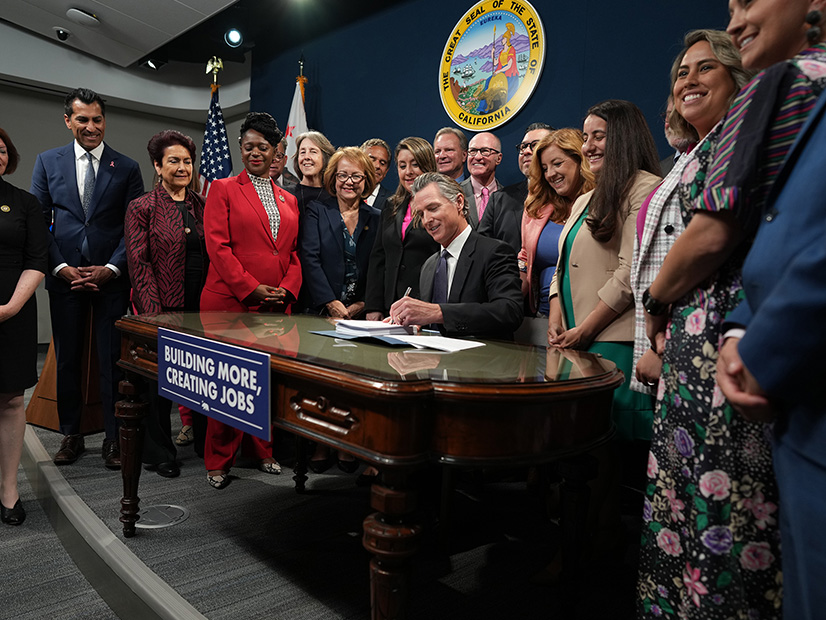
California Gov. Gavin Newsom (D) on Monday signed a $311 billion state budget and infrastructure bills aimed at building generation and transmission to ensure reliability as the state transitions to 100% clean energy.
The fiscal year 2023/24 budget retains 95% of last year’s $54 billion, five-year annual commitment for climate initiatives, including roughly $10 billion for electric vehicle infrastructure and incentives.
In his budget plan released in January, Newsom had proposed slashing $6 billion from climate commitment because of this year’s tax revenue shortfall, but he agreed with lawmakers to cut only $2.9 billion.
Negotiations with lawmakers also produced the five-bill infrastructure package that Newsom signed Monday.
The bills included Senate Bill 149, which will streamline judicial review of clean energy and transportation projects by requiring that challenges to the projects under the California Environmental Quality Act (CEQA) be resolved by the courts within 270 days, including appeals. (See Newsom Stresses Role of Permitting in Calif. Energy Transition.)
Another bill, SB 147, will allow the incidental taking of fully protected species under the state’s Endangered Species Act during the construction of infrastructure projects. It also declassifies the peregrine falcon, brown pelican and thicktail chub, a small fish, as protected species.
Environmental groups and some Democratic lawmakers opposed the measures, but Newsom said keeping the lights on and building out clean energy and transmission ought to take precedence over lengthy environmental reviews.
“We’ve got to move to build those projects, and we’ve got to remove some hurdles,” Newsom said. “I know there’s a purity of thinking … that we can live with rules and regulations that require nine years of processes to deliver the reliability that the people of the state deserve, but I just don’t see that from the prism of where I’m operating from.”
The last three summers, when the state struggled with blackouts and near misses, were “challenging,” he said.
Avoiding future repeats will require adding thousands of new megawatts annually, CAISO and the California Public Utilities Commission have said. In May, the CAISO Board of Governors passed its 2022/23 transmission plan, which calls for 45 projects totaling $7.3 billion to add 70 GW of new resources over the next 10 years.
“That’s exactly why this infrastructure package was so important,” Newsom said, thumping his lectern. “I want you to know that I have short-term confidence but long-term anxiety if we do not deliver on these large-scale utility” projects.
Newsom said he feels “a deep sense of urgency” about building out energy capacity. California needs to build faster, including to compete for billions of dollars in federal funding from the Inflation Reduction Act and programs.
“I don’t want to just come up here and lament about extreme heat, extreme droughts, extreme weather,” he said. “I want to actually deliver, not just on goals and ambition, but on projects. And so, I’m in a different mindset, sort of a hardheaded pragmatism. You know, let’s get moving.”
